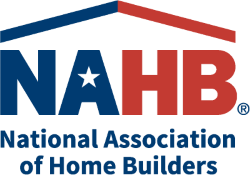NAHB: Big Win for Contractors in Illinois Construction Defects Case

The Illinois Supreme Court last week issued an opinion that was extremely favorable to the construction industry in Acuity v. M/I Homes of Chicago, LLC, a case involving commercial general liability (CGL) coverage for construction defects resulting in water damage to a townhome project.
The Supreme Court responded to the request of the appellate court to clarify the law on the existence of property damage or occurrence in Illinois. That request was supported by an amicus curiae brief sponsored by NAHB, the HBA of Illinois, Associated General Contractors of America, American Subcontractors Association and local chapters in Illinois.
For more than 20 years, courts in Illinois had interpreted the definitions of “property damage” and “occurrence” in the standard commercial general liability policy to deny coverage for property damage arising out of defective construction in the entire construction project itself. Those courts found coverage only in the unlikely event of damage to other real property, and perhaps to personal property of project owners.
This interpretation amounted to little, if any, coverage for insured Illinois contractors. Illinois has lagged behind numerous other jurisdictions in upholding coverage for unexpected and unintended property damage arising from faulty workmanship by the insured.
The Supreme Court of Illinois noted that such a narrow view of coverage is unsupported by the policy language, and it joined the majority of jurisdictions in holding that unexpected and unintended physical injury to tangible property arising out of defective work amounts to an occurrence of property damage under a CGL policy.
The court further opined that once an occurrence of property damage is found, resort must be had to the property damage exclusions within the policy to determine ultimate coverage, including exclusions relating to that particular part of property damage upon which work is being performed out of which the property damage arises; that particular part of real property that must be repaired or replace because of incorrect work by the insured; property damage to the insured’s work subsequent to completion (subject to an exception for work performed by the insured contractor’s subcontractors); or impaired property or property that has not been physically injured.
In doing so, the Court rejected the notion that property damage arising out of defective workmanship amounts to a an uninsurable “business risk,” the cost of which is to be borne by the insured contractor itself.
Aligning itself with the majority of jurisdictions, the Court concluded that uninsured business risks are to be sorted out through application of the property damage exclusions. In that regard, it remanded the case to the trial court to determine issues relating to applicability of those exclusions to the facts before it.
The home building industry had a good day before the Illinois Supreme Court. That success is the culmination of nearly 20 years of advocating before numerous state and federal courts throughout the United States on these issues through the filings of amicus curiae briefs. The brief in Acuity v. M/I Homes was primarily authored and filed by Patrick J. Wielinski of Cokinos Young, Dallas, Texas, joined by Clifford Shapiro of Chicago. Wielinski and his firm have participated in the filing of such briefs for many years.
To view the original post, click here.
Contact:
David Jaffe – Media Contact – djaffe@nahb.org – (202) 266-8317
Source: National Association of Home Builders

